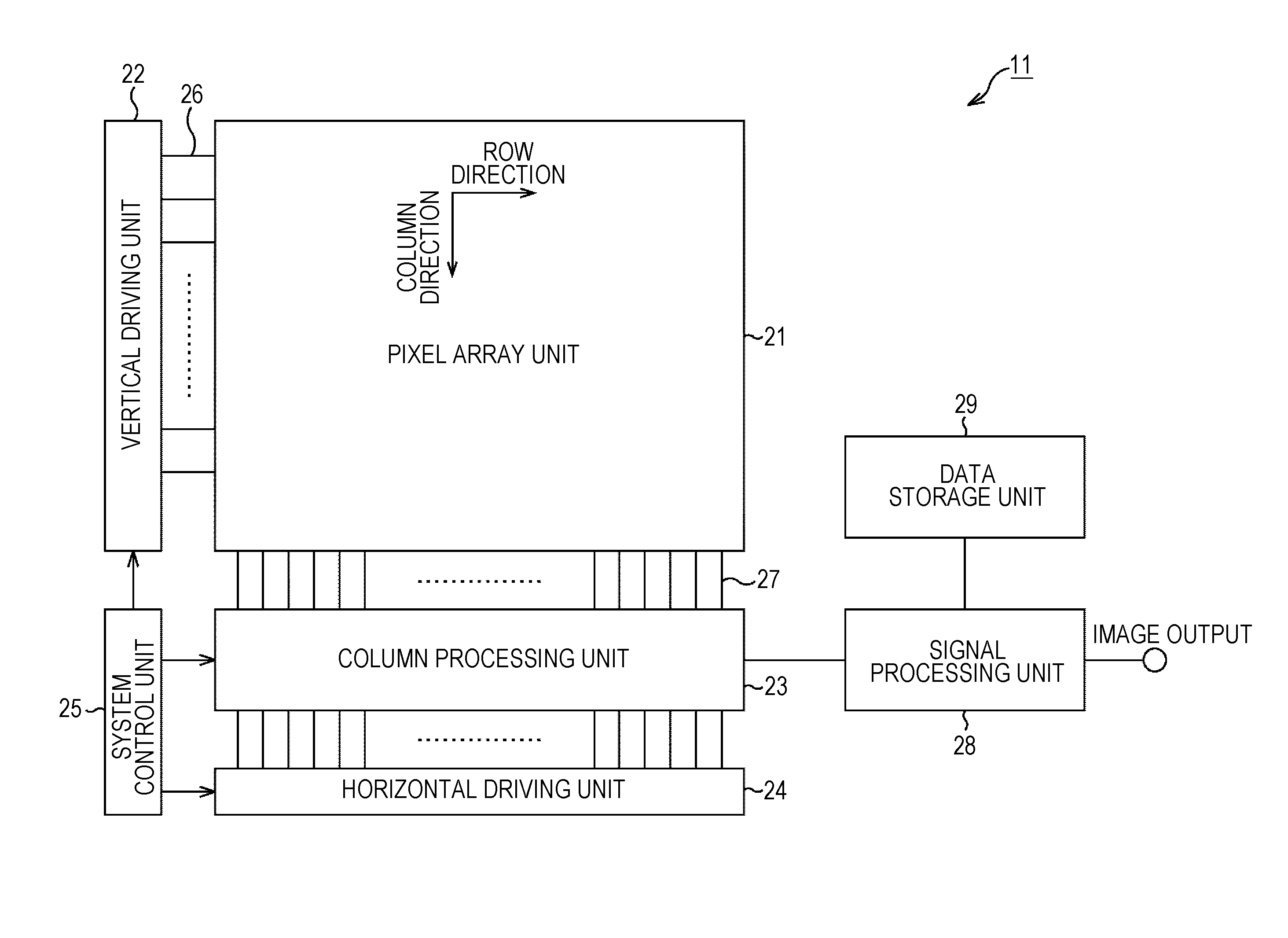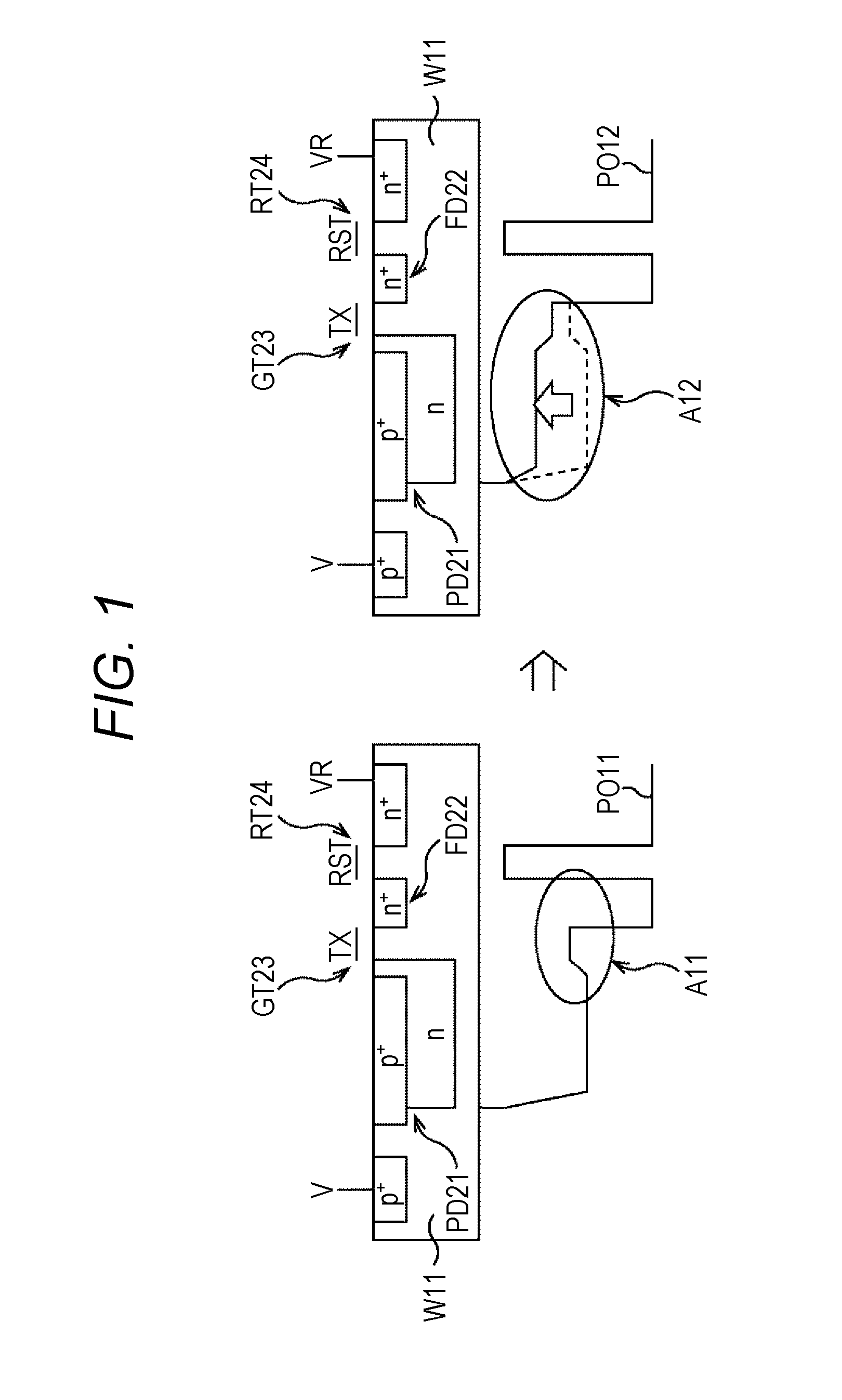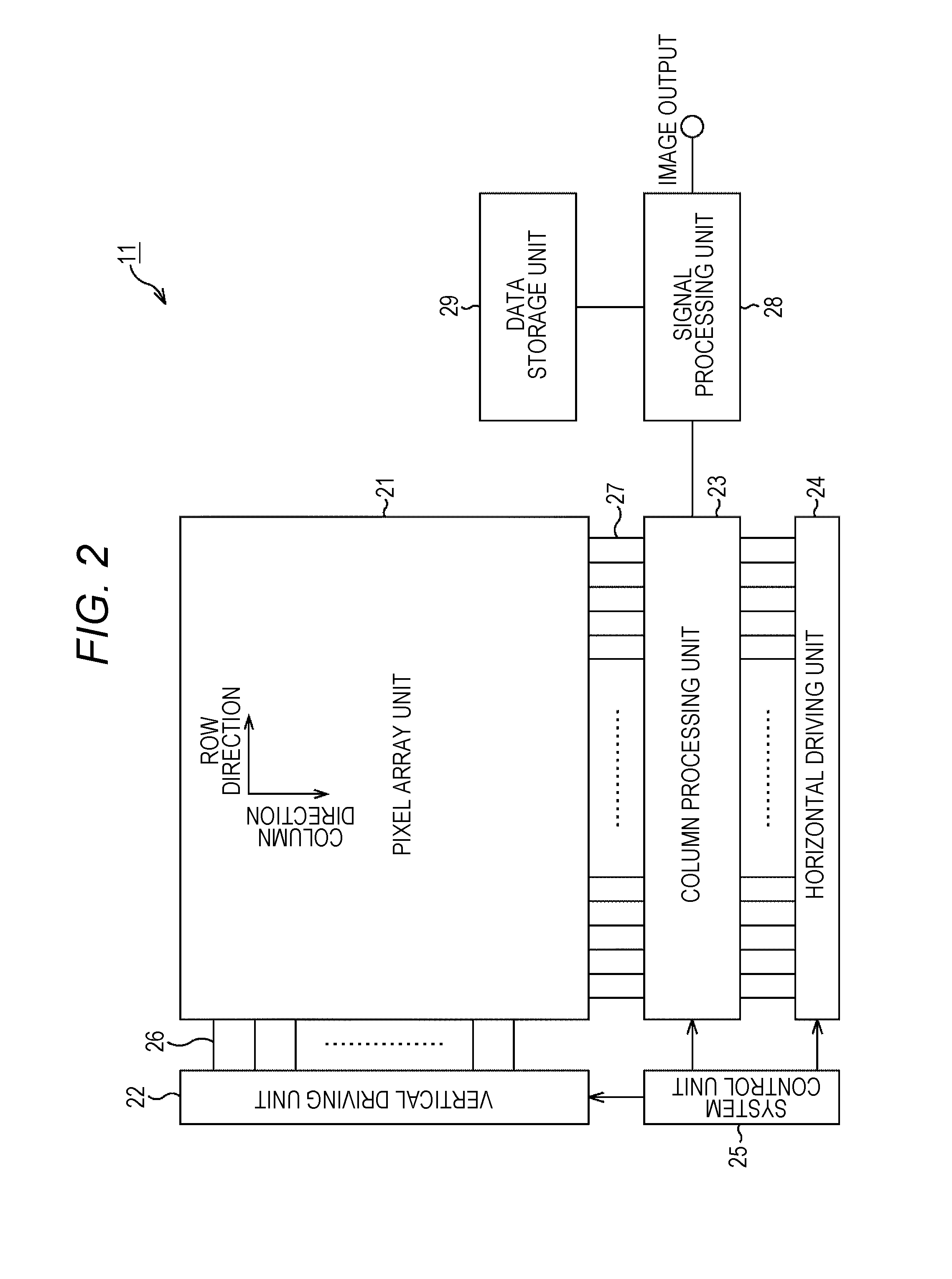Imaging element, driving method, and electronic apparatus
a driving method and electronic equipment technology, applied in the direction of color television, television system scanning details, television systems, etc., can solve the problems of difficult to secure the voltage applied to the gate in the pixel, and achieve the effect of reducing voltage, high frame rate, and increasing sensitivity
- Summary
- Abstract
- Description
- Claims
- Application Information
AI Technical Summary
Benefits of technology
Problems solved by technology
Method used
Image
Examples
first embodiment
Configuration Example of Solid-State Imaging Element
[0069]First, a configuration example of a solid-state imaging element to which the present technology is applied will be described. FIG. 2 is a diagram illustrating a configuration example of an embodiment of the solid-state imaging element to which the present technology is applied.
[0070]A solid-state imaging element 11 is configured from a CMOS image sensor, for example, and receives light from a subject, executes photoelectric conversion on the light, and generates an image signal, thereby imaging an image.
[0071]The solid-state imaging element 11 includes a pixel array unit 21, a vertical driving unit 22, a column processing unit 23, a horizontal driving unit 24, a system control unit 25, pixel driving lines 26, vertical signal lines 27, a signal processing unit 28, and a data storage unit 29.
[0072]In the solid-state imaging element 11, the pixel array unit 21 is formed on a semiconductor substrate (chip) not illustrated in the ...
second embodiment
With Respect to Structure of Each Pixel
[0127]A structure of the pixel illustrated in FIG. 3 will be described. FIG. 10 is a diagram illustrating the structure of the pixel illustrated in FIG. 3. In FIG. 10, a plane pattern illustrating a pixel layout and cross-sections taken along A-A′ and B-B′ in the plane pattern, respectively, are illustrated. In FIG. 10, portions corresponding to those in the case of FIG. 3 are denoted with the same reference numerals and explanation thereof is appropriately omitted.
[0128]As illustrated in the cross-section taken along B-B′, a photodiode 61 has a configuration of a diode of a PN junction obtained by forming an N-type semiconductor region 101 in a P-type well 52 on a semiconductor substrate 51. The photodiode 61 becomes an embedded photodiode in which a P-type semiconductor region 102 is formed in a surface layer portion thereof and a depletion end is separated from an interface.
[0129]A first transfer gate unit 63 has a configuration in which a g...
third embodiment
Modification of Third Embodiment
With Respect to Operation of Solid-State Imaging Element
[0245]In addition, for example, as illustrated in FIG. 18, a negative voltage may be applied to the P-type well 52 when the charges are transferred from the photodiode 61 to the charge / voltage converting unit 68 and assistance of the charge transfer may be performed.
[0246]FIG. 18 illustrates a state of each signal supplied to a pixel at each time. That is, in the drawing, a horizontal direction shows a time and a longitudinal direction shows a level (voltage) of each signal. In addition, polygonal lines SL41 to SL45 show driving signals SEL, TG, RST, a pulse Pwell, and a driving signal GC, respectively.
[0247]In an example of FIG. 18, an operation until just before a time t43 after the imaging operation of the image starts is the same as the operation until just before the time t33 in FIG. 17. That is, at the time t41, the driving signals SEL, RST, and GC are turned on and the pulse Pwell is turne...
PUM
| Property | Measurement | Unit |
|---|---|---|
| time | aaaaa | aaaaa |
| imaging function | aaaaa | aaaaa |
| voltage | aaaaa | aaaaa |
Abstract
Description
Claims
Application Information
 Login to View More
Login to View More - R&D
- Intellectual Property
- Life Sciences
- Materials
- Tech Scout
- Unparalleled Data Quality
- Higher Quality Content
- 60% Fewer Hallucinations
Browse by: Latest US Patents, China's latest patents, Technical Efficacy Thesaurus, Application Domain, Technology Topic, Popular Technical Reports.
© 2025 PatSnap. All rights reserved.Legal|Privacy policy|Modern Slavery Act Transparency Statement|Sitemap|About US| Contact US: help@patsnap.com



